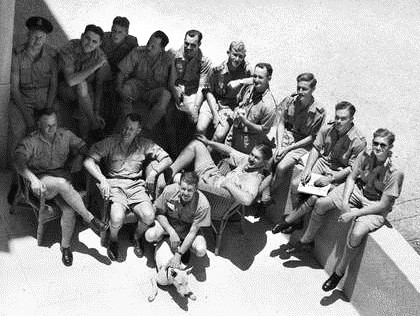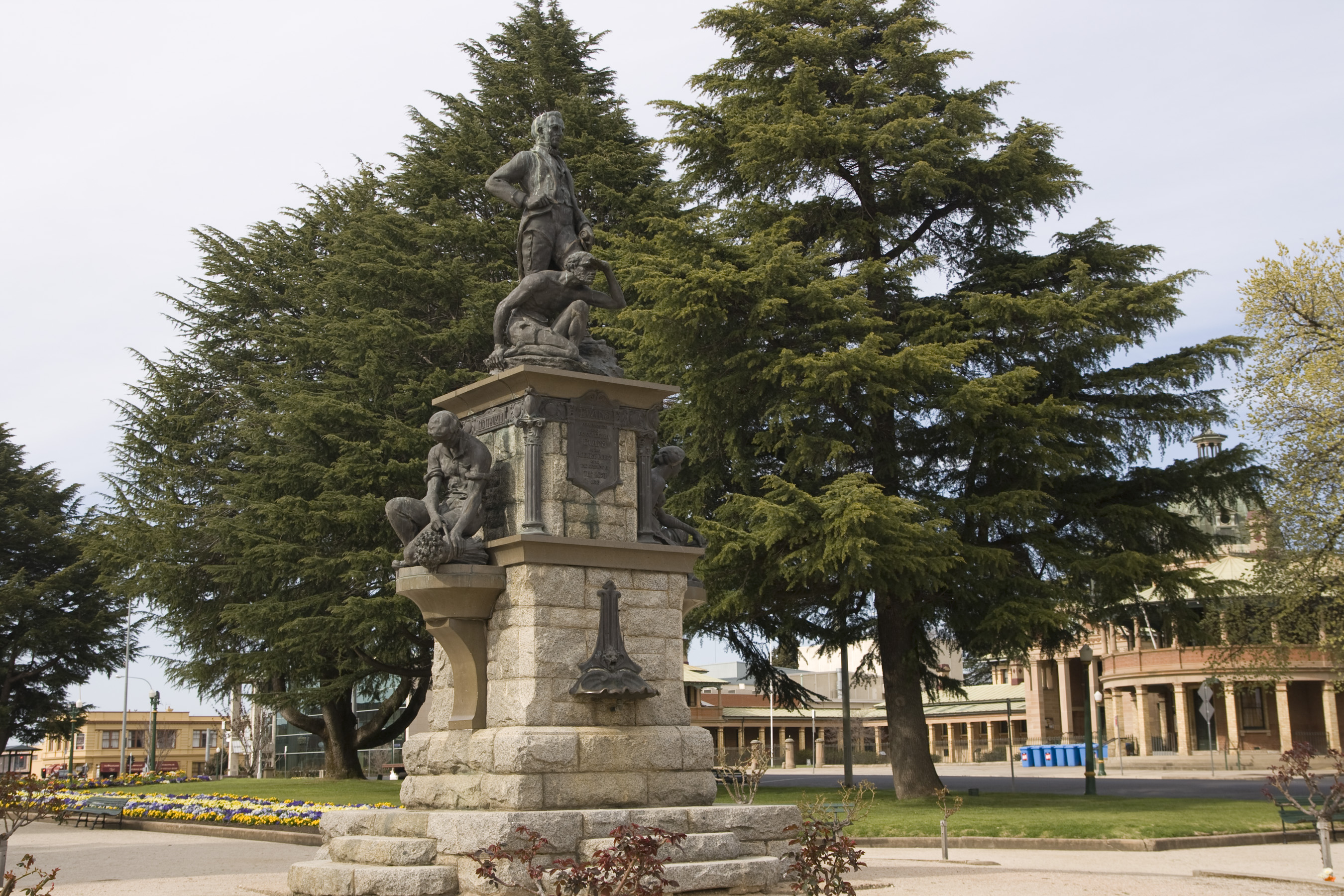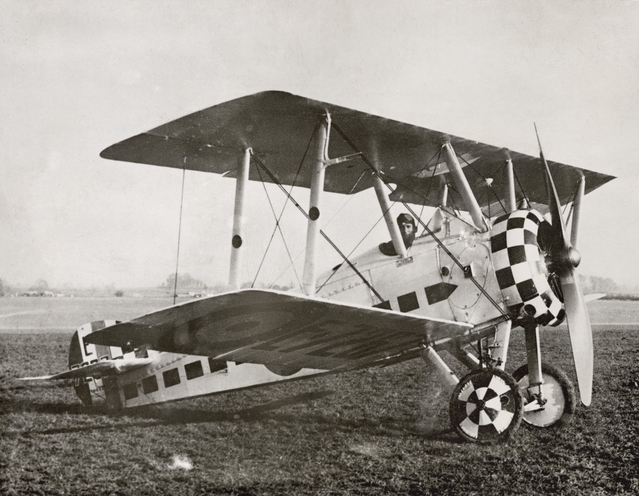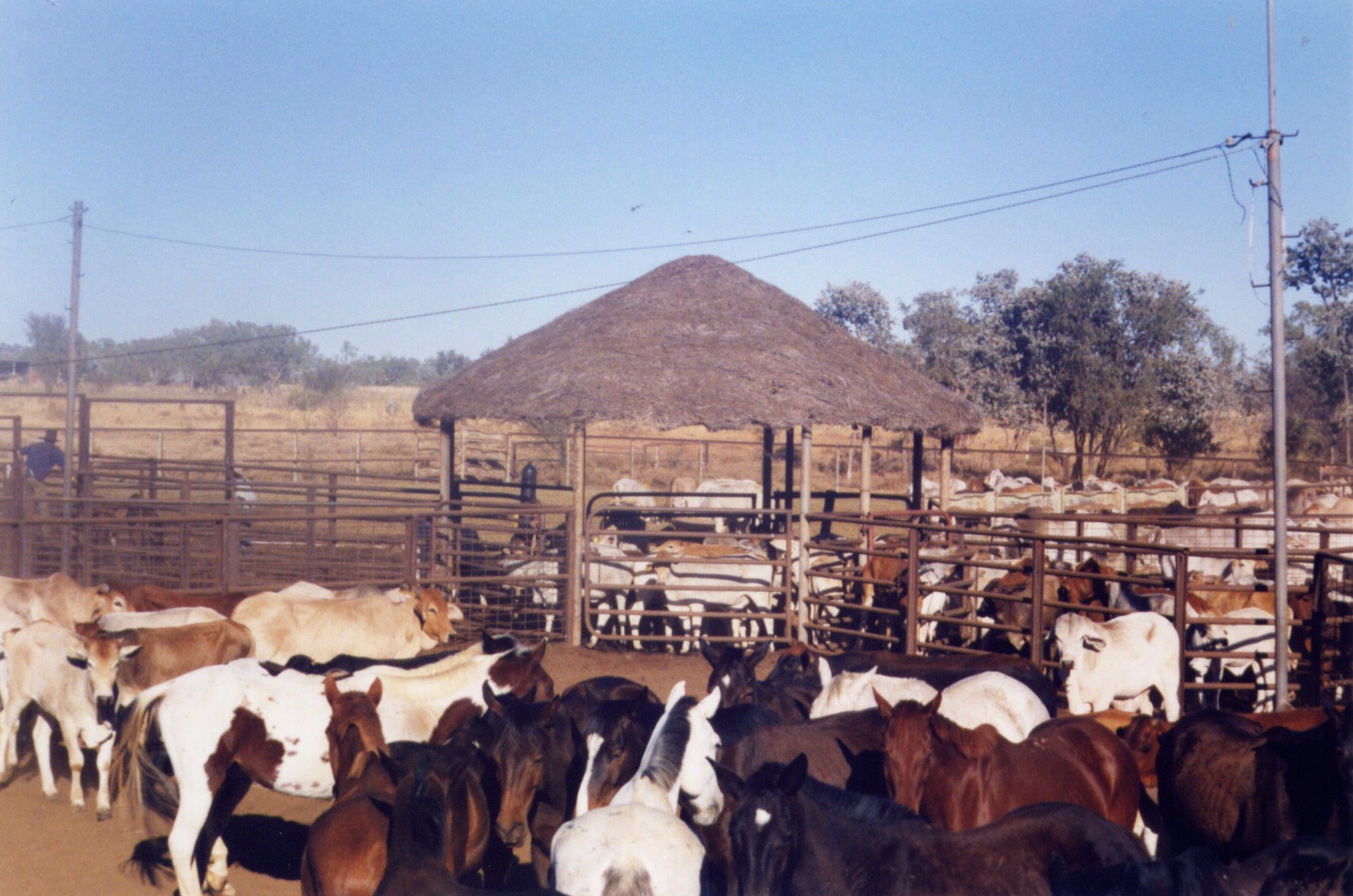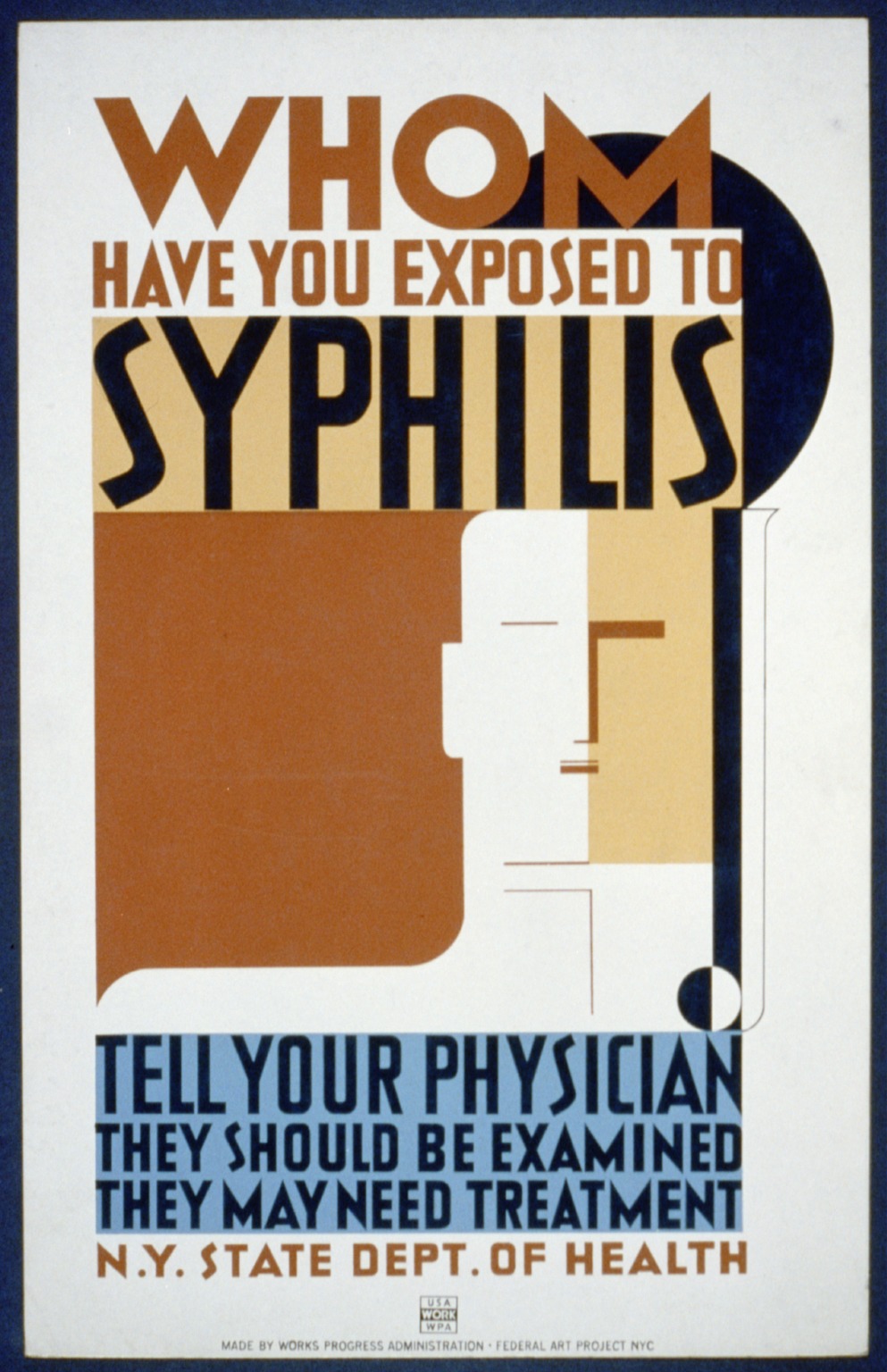|
Bobby Gibbes
Robert Henry Maxwell Gibbes, (6 May 1916 – 11 April 2007) was an Australian fighter ace of World War II, and the longest-serving wartime commanding officer of No. 3 Squadron RAAF. He was officially credited with 10¼ aerial victories, although his score is often reported as 12, including two shared; Gibbes was also credited with five aircraft probably destroyed, and a further 16 damaged. He commanded No. 3 Squadron in North Africa from February 1942 to April 1943, apart from a brief period when he was wounded. Born in rural New South Wales, Gibbes worked as a jackaroo and salesman before joining the Royal Australian Air Force in February 1940. Posted to the Middle East in April 1941, he flew with No. 3 Squadron in the Syria–Lebanon Campaign, and became commanding officer during the Western Desert Campaign, where his leadership and fighting skills earned him the Distinguished Service Order and the Distinguished Flying Cross and Bar. Subseque ... [...More Info...] [...Related Items...] OR: [Wikipedia] [Google] [Baidu] |
Young, New South Wales
Young is a town in the South Western Slopes region of New South Wales, Australia, and the largest town in the Hilltops Region. The "Lambing Flat" Post Office opened on 1 March 1861 and was renamed "Young" in 1863. Young is marketed as the Cherry Capital of Australia and every year hosts the National Cherry Festival. Young is situated on the Olympic Highway and is approximately two hours' drive from the Canberra area. It is in a valley, with surrounding hills. The town is named after Sir John Young, the governor of NSW from 1861 to 1867. History Before European settlers arrived in Young, members of the Burrowmunditory tribe, a family group of the indigenous Wiradjuri Nation, lived in the region. Descendants of the Burrowmunditory clan still live in Young. James White was the first European settler in the district and established 'Burrangong' station in 1826 with a squatting claim of . His story is told in the novel ''Brothers in Exile''. In late June 1860 Michael Sheedy ... [...More Info...] [...Related Items...] OR: [Wikipedia] [Google] [Baidu] |
Australian First Tactical Air Force
The Australian First Tactical Air Force (No. 1 TAF) was formed on 25 October 1944 by the Royal Australian Air Force (RAAF). Its purpose was to provide a mobile force of fighter and ground attack aircraft that could support Allied army and naval units fighting the Empire of Japan in the South West Pacific Area. One of several Allied tactical air forces formed during World War II, it evolved from the RAAF's No. 10 Operational Group, established a year earlier. Following action in the assaults on Aitape and Noemfoor, the group was renamed the First Tactical Air Force to better reflect its size and role. It was beset with morale and leadership issues in early 1945, but recovered to take part in the battles of Tarakan, North Borneo, and Balikpapan. Reaching its peak strength of over 25,000 personnel in July 1945, No. 1 TAF's squadrons operated such aircraft as the P-40 Kittyhawk, Supermarine Spitfire, Bristol Beaufighter, and B-24 Liberator. The formation remained acti ... [...More Info...] [...Related Items...] OR: [Wikipedia] [Google] [Baidu] |
Bathurst, New South Wales
Bathurst () is a city in the Central Tablelands of New South Wales, Australia. Bathurst is about 200 kilometres (120 mi) west-northwest of Sydney and is the seat of the Bathurst Region, Bathurst Regional Council. Founded in 1815, Bathurst is the oldest inland settlement in Australia and had a population of 44,621 in 2023. Bathurst is often referred to as the Gold Country, as the area was the site of Australia's first discovery of payable gold in 1851, and where Australia's first gold rush occurred. Today education, tourism and manufacturing drive the economy. The internationally known racetrack Mount Panorama, also known as Wahluu, is a landmark of the city which brings in a lot of tourism, especially during the week of the Bathurst 1000. Bathurst has a historic city centre with many ornate buildings remaining from the New South Wales gold rush in the mid to late 19th century. History Wiradjuri The area around what is now called Bathurst was originally occupied by the Muurra ... [...More Info...] [...Related Items...] OR: [Wikipedia] [Google] [Baidu] |
All Saints College, Bathurst
All Saints' College was an independent, co-educational Christian college in the Anglican tradition. It was established in 1874, and closed in 2018 to merge with The Scots School, Bathurst, to form Scots All Saints' College, with campuses in and , New South Wales. Up until its merger, the college catered for day students from pre-kindergarten to Year 12, and boarders from Years 7 to 12. History Early years to 1900s In 1873, following the closure of W. H. Savigny's college, Canon Thomas Smith of All Saints' Cathedral, Bathurst, with the support of Bishop Samuel Marsden began the process of starting the School. The following year, on 27 January, the Bathurst Church of England College opened its doors to seven students under the headmastership of Henry Kemmis. Renamed All Saints' College, the school officially came into being in mid-1875 when it moved to its permanent site on the corner of Piper and Hope Streets after a successful fund raising campaign and the Bishop's donation ... [...More Info...] [...Related Items...] OR: [Wikipedia] [Google] [Baidu] |
Sopwith Camel
The Sopwith Camel is a British First World War single-seat biplane fighter aircraft that was introduced on the Western Front in 1917. It was developed by the Sopwith Aviation Company as a successor to the Sopwith Pup and became one of the best-known fighter aircraft of the Great War. Pilots flying Camels were credited with downing 1,294 enemy aircraft, more than any other Allied fighter of the conflict. Towards the end of the war, Camels lost their edge as fighters and were also used as a ground-attack aircraft. The Camel was powered by a single rotary engine and was armed with twin synchronized Vickers machine guns. It was difficult to fly, with 90% of its weight in the front two metres (seven feet) of the aircraft, but it was highly manoeuvrable in the hands of an experienced pilot, a vital attribute in the relatively low-speed, low-altitude dogfights of the era. Its pilots joked that their fates would involve "a wooden cross, the Red Cross, or a Victoria Cross". T ... [...More Info...] [...Related Items...] OR: [Wikipedia] [Google] [Baidu] |
Station (Australian Agriculture)
In Australia and New Zealand, a station is a large landholding used for producing livestock, predominantly cattle or sheep, that needs an extensive range of grazing land. The owner of a station is called a pastoralism, pastoralist or a wikt:grazier, grazier, corresponding to the North American term "rancher". Originally ''station'' referred to the homestead (buildings), homestead – the owner's house and associated outbuildings of a pastoral property, but it now generally refers to the whole holding. Stations in Australia are on Crown land pastoral leases, and may also be known more specifically as sheep stations or cattle stations, as most are stock-specific, dependent upon the region and rainfall. If they are very large, they may also have a subsidiary homestead, known as an outstation. Sizes Sheep and cattle stations can be thousands of square kilometres in area, with the nearest neighbour being hundreds of kilometres away. Anna Creek Station in South Australia is th ... [...More Info...] [...Related Items...] OR: [Wikipedia] [Google] [Baidu] |
Governor-General
Governor-general (plural governors-general), or governor general (plural governors general), is the title of an official, most prominently associated with the British Empire. In the context of the governors-general and former British colonies, governors-general continue to be appointed as viceroy to represent the monarch of a personal union in any sovereign state over which the monarch does not normally reign in person (non-UK Commonwealth realm). In the British Empire, governors-general were appointed on the advice of the government of the United Kingdom and were often British aristocracy, but in the mid-twentieth century they began to be appointed on the advice of the independent government of each realm and be citizens of each independent state. Governors-general have also previously been appointed in respect of major colonial states or other territories held by either a monarchy or republic, such as Japan, Korea, Taiwan and France in Indochina. Current uses In modern ... [...More Info...] [...Related Items...] OR: [Wikipedia] [Google] [Baidu] |
Government House, Canberra
Government House, colloquially known as Yarralumla, is the official residence of the governor-general of Australia. It is located in the suburb of Yarralumla in the Australian capital city of Canberra, in the Australian Capital Territory. The main residence is set amid of parkland. The house and its associated grounds were added to the Commonwealth Heritage List on 22 June 2004. At Government House, the governor-general of Australia presides over meetings of the Federal Executive Council, and holds investitures to present honours within the Order of Australia and associated Australian military, bravery and civil decorations. The governor-general also receives visiting heads of state and other dignitaries and the credentials of ambassadors to Australia, and entertains people from all walks of life. History American architect Walter Burley Griffin included provision for an impressive, purpose-built Government House in his plans for the modern city of Canberra. It was to be pla ... [...More Info...] [...Related Items...] OR: [Wikipedia] [Google] [Baidu] |
Admiralty House, Sydney
Admiralty House is the official residence of the governor-general of Australia in Sydney. It is located in the suburb of Kirribilli, on the northern foreshore of Sydney Harbour, and adjacent to Kirribilli House, which serves as the Sydney residence of the Australian Prime Minister. The large Victorian Regency and Italianate sandstone manor, completed in stages based on designs by James Barnet and Walter Liberty Vernon, occupies the tip of Kirribilli Point. Once known as "Wotonga", it has commanding views across Sydney Harbour to the Sydney Harbour Bridge and the Sydney Opera House. Admiralty House is regarded as the secondary residence of the governor-general, the main residence being Government House in Canberra, also known as Yarralumla. Its current name originates in the fact that it served as the residence for the Commander-in-Chief of the Royal Navy's Australian Squadron from 1885 to 1913. The original building on the site was completed, as a private dwelling, in m ... [...More Info...] [...Related Items...] OR: [Wikipedia] [Google] [Baidu] |
Kirribilli, New South Wales
Kirribilli is a Suburb (Australia), suburb of Sydney, New South Wales, Australia. One of the city's most established and affluent neighbourhoods, it is located three kilometres north of the Sydney central business district, in the Local government in Australia, local government area administered by North Sydney Council. Kirribilli is a harbourside suburb, sitting on the Lower North Shore (Sydney), North Shore of Port Jackson, Sydney Harbour. Kirribilli House is one of the two official residences of the Prime Minister of Australia. History The name Kirribilli is derived from an Indigenous Australians, Aboriginal word ''Kiarabilli'', which means 'good fishing spot'. Another theory suggests that Kirribilli is an adaptation of 'Carabella', the name given by early colonist James Milson to his first house. The suburb initially formed in the vicinity of Jeffrey Street and was subsequently part of a grant to James Milson, after whom Milsons Point was named. The area was largely covere ... [...More Info...] [...Related Items...] OR: [Wikipedia] [Google] [Baidu] |
John George Nathaniel Gibbes
Colonel John George Nathaniel Gibbes (30 March 17875 December 1873) was a British army officer who emigrated to Australia in 1834 on his appointment as Collector of Customs for the Colony of New South Wales, an appointment which gave him a seat on the New South Wales Legislative Council and which he held for 25 years. In his capacity as head of the New South Wales Department of Customs, Colonel Gibbes was the colonial government's principal accumulator of domestic-sourced revenue − prior to the huge economic stimulus provided by the Australian gold rushes of the 1850s − through the collection of import duties and other taxes liable on ship-borne cargoes. Thus, he played a significant role in the transformation of the City of Sydney (now Australia's biggest State capital) from a convict-based settlement into a prosperous, free enterprise-based port replete with essential government infrastructure. Gibbes was forced to retire from the Council in 1855 and from his post as Col ... [...More Info...] [...Related Items...] OR: [Wikipedia] [Google] [Baidu] |
Who's Who In Australia
The pronoun ''who'', in English language, English, is an English interrogative words, interrogative pronoun and a English relative words, relative pronoun, used primarily to refer to persons. Unmarked, ''who'' is the pronoun's subjective form; its inflected forms are the objective case, objective ''whom'' and the possessive ''whose''. The set has derived Indefinite pronoun, indefinite forms ''whoever'', ''whomever'', and ''whoseever,'' as well as a further, earlier such set ''whosoever,'' ''whomsoever'', and ''whosesoever'' (see also "-ever"). Etymology The interrogative and relative pronouns ''who'' derive from the Old English language, Old English singular interrogative , and whose paradigm is set out below: It was not until the end of the 17th century that ''who'' became the only pronoun that could ask about the identity of persons and ''what'' fully lost this ability. "The first occurrences of wh-relatives date from the twelfth century (with the possible exception (see ... [...More Info...] [...Related Items...] OR: [Wikipedia] [Google] [Baidu] |
